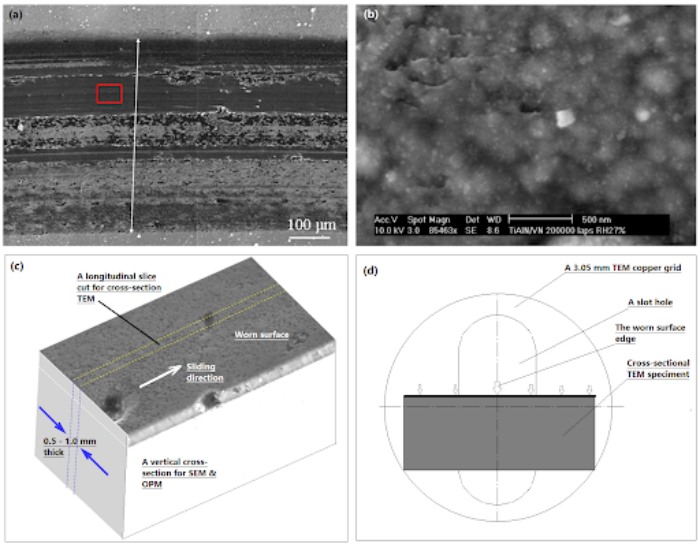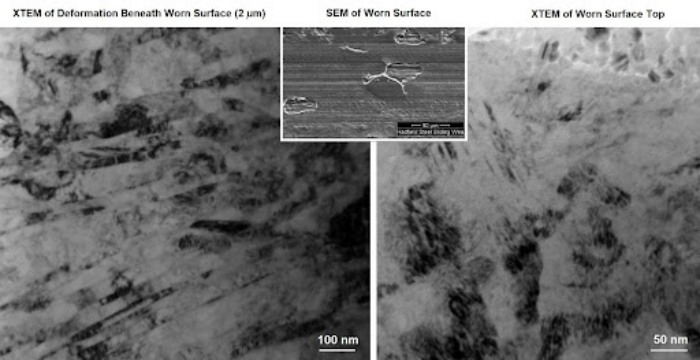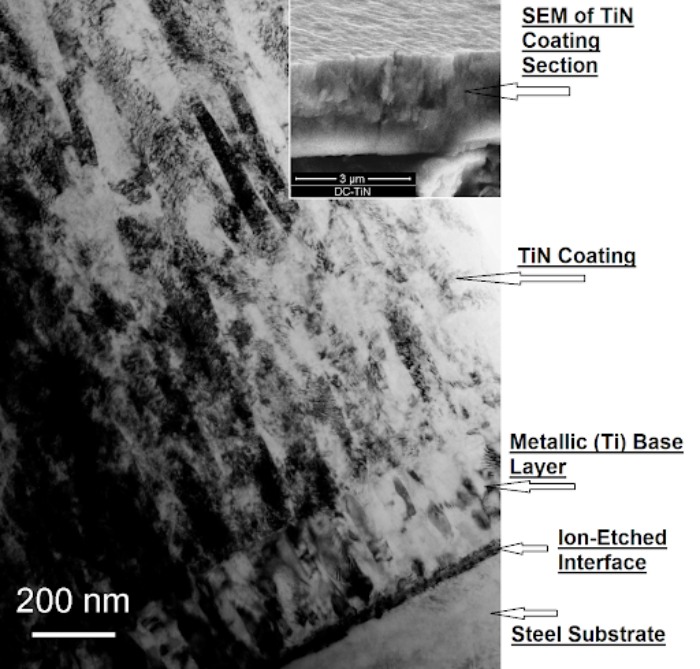Transmission electron microscopy (TEM) is a powerful technique for observing and analysing the microstructure of materials, generating highly-magnified images at a sub-nano scale. Here at the Sheffield Multimodal Imaging Centre, we’re using TEM to study and improve the performance of steel products and hard coatings.
A unique tool
Wear as a result of sliding/impacting is caused by changes in a material’s microstructure at an atomic level.TEM is the only method capable of observing these changes.
This means it can be used to investigate the cause of failure of a product or mechanism. It’s been applied to cutting tools, railway tracks, mining equipment and many other areas.
Physical vapour deposition (PVD) hard coatings are widely used in high-performance machining tools, making them more durable and scratch resistant. Because of the nanoscale structures used in these coatings, TEM is an essential tool in developing and understanding them.
Preparing the sample
Sample preparation plays a key role in TEM. A sample must be thin enough to allow electrons to pass through it, usually a thickness of a few tens of nanometres.
For the examples below, cross-sectional specimens were prepared using specialist equipment. Figure 1 shows how a cross-sectional specimen of a worn surface sample is typically prepared.







